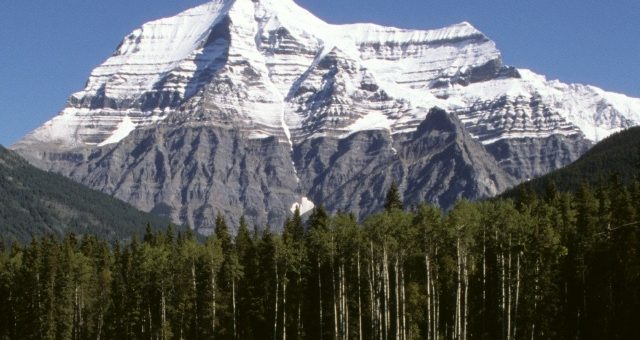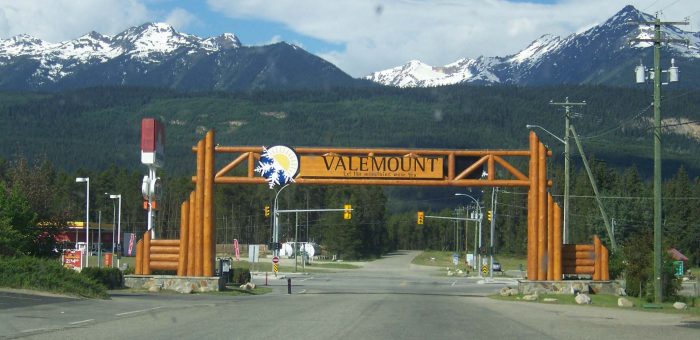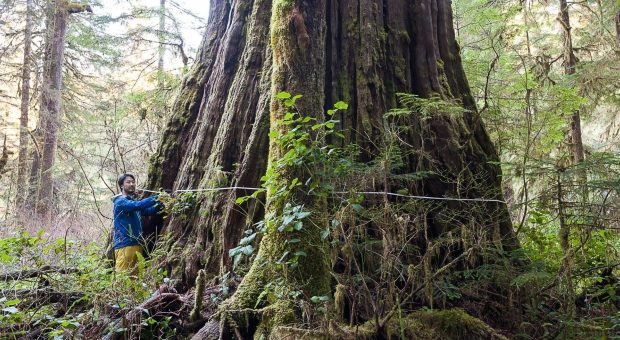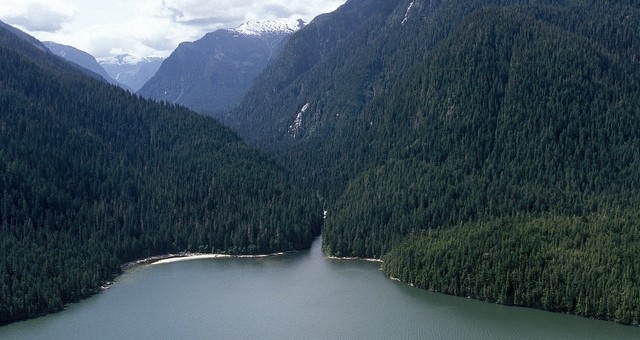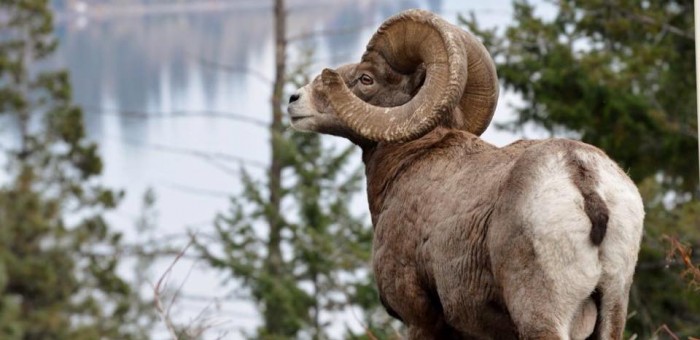Parks
Responding to government inaction on campsite booking system
Media Statement: July 5th, 2016
Weaver responds to government inaction on campsite booking system
For immediate release
Victoria B.C. – Andrew Weaver, Leader of the B.C. Green Party and MLA for Oak Bay – Gordon Head, today responded to the provincial government’s encouragement of a campground booking system that excludes British Columbians from accessing public campgrounds and allows private for-profit companies to compete with B.C. families.
“In a new practice welcomed by the B.C. Liberals, B.C. residents are being told they have to pay more to compete with companies who book provincial campsites in bulk and resell them at double the price,” says Andrew Weaver.
“It seems like the B.C. government has lost sight of the public purpose of our parks and campgrounds. Our provincial campsites are not products to be sold, they belong to the people of B.C.
Government agencies have been entrusted by the public to manage our parks as a collective good so they can be preserved and maintained into the future. Instead they are managing them as if they were a nothing more than a commodity.
The public is the owner, not the customer, and the current system is excluding B.C. families from accessing their parks.
The reservation system should give British Columbians priority, either by allocating enough resident – specific sites to meet local demand or by staggering booking openings so British Columbians have first shot at reserving a spot.”
Media contact:
Mat Wright
Press Secretary – Andrew Weaver MLA
Cell: 250 216 3382
Mat.wright@leg.bc.ca
Twitter: @MatVic
Parliament Buildings
Room 027C
Victoria BC V8V 1X4
An Exciting Opportunity for Tourism & Economic Development in Rural BC
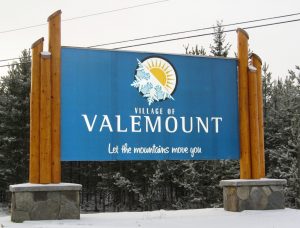 The community of Valemount is located on Southern Yellowhead Highway 5, twenty kilometres south of the intersection with Yellowhead Highway 16 that connects Prince George to Edmonton. With a population (including the surrounding area) of about 2000, Valemount, like so many other rural communities in BC, used to have a forestry-based economy. In the case of Valemount, it was the Slocan mill that was the engine of their local economy. But that mill shut down for good over a decade ago.
The community of Valemount is located on Southern Yellowhead Highway 5, twenty kilometres south of the intersection with Yellowhead Highway 16 that connects Prince George to Edmonton. With a population (including the surrounding area) of about 2000, Valemount, like so many other rural communities in BC, used to have a forestry-based economy. In the case of Valemount, it was the Slocan mill that was the engine of their local economy. But that mill shut down for good over a decade ago.
The people of Valemount and their elected Mayor and Council were resilient. Today Valemount has emerged as a tourism centre in northeastern British Columbia. And it’s about to get a whole lot more exciting.
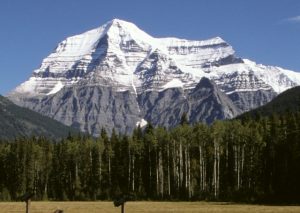 Valemount is a natural hub for ecotourism. It is a fully serviced community sitting next to Jasper National Park and Mount Robson Provincial Park. It’s also located near the head of Kinbasket Lake, created when BC Hydro’s Mica Dam was built on the Canoe River. Canoe river is the northernmost tributary within the Columbia River drainage basin. McLennan river, one of the easternmost tributaries of the Fraser River also flows along the northern edge of Valemount.
Valemount is a natural hub for ecotourism. It is a fully serviced community sitting next to Jasper National Park and Mount Robson Provincial Park. It’s also located near the head of Kinbasket Lake, created when BC Hydro’s Mica Dam was built on the Canoe River. Canoe river is the northernmost tributary within the Columbia River drainage basin. McLennan river, one of the easternmost tributaries of the Fraser River also flows along the northern edge of Valemount.
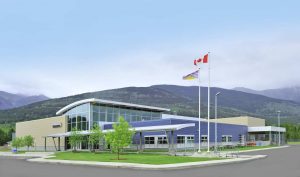 Whether it be skiing or snowshoeing in the winter or white water rafting, fishing, hiking or even golfing in the summer, Valemount has a diverse array of outdoor activities for the young and old. The town’s push to become an ecotourism hub even extends to the town’s high school, home to about 75 students. In 2012, the school became branded as a “mountain school”. The school developed curriculum and learning resources and activities involving outdoor and environmental themes in an attempt to arrest declining enrollment in the area.
Whether it be skiing or snowshoeing in the winter or white water rafting, fishing, hiking or even golfing in the summer, Valemount has a diverse array of outdoor activities for the young and old. The town’s push to become an ecotourism hub even extends to the town’s high school, home to about 75 students. In 2012, the school became branded as a “mountain school”. The school developed curriculum and learning resources and activities involving outdoor and environmental themes in an attempt to arrest declining enrollment in the area.
Over the last few months I became more and more intrigued about the proposed Valemount Glacier Destination year round ski and sightseeing resort.
On Friday last week, shortly before meeting to learn more from key executives in the Pheidias group, Valemount Glacier Destination’s project proponent, I also met with Gord Stewart, Senior Vice President, and Philip Hochstein, President, of the Independent Contractors and Businesses Association of BC (ICBA). As noted on their website:
“The Independent Contractors and Businesses Association of B.C. services and represents B.C.’s construction sector. ICBA’s 1,100 members build in the multi-family residential and Industrial, Commercial and Institutional (ICI) construction sectors and are involved in virtually all major capital projects in British Columbia.“
The purpose of my visit to the ICBA was to connect with Mr. Hochstein about his work with the ICBA and to learn more about the objectives and priorities of the ICBA and its member organizations. Our conversation centred around responsible resource development. The discussion was far reaching. I emphasized the need for bottom-up project development that starts with community involvement from day one, businesses internalizing externalities, and government clearly outlining and enforcing the regulatory environment and ensuring compliance with it. We both agreed that the construction industry recognizes that project development must be done responsibly. Mr. Hochstein’s challenge to me, a challenge that I accepted, was to define for him what “responsibly” means. I will be working on that in the weeks ahead.
This is an important challenge since in British Columbia, it seems like it is impossible for any resource project to move forward without meeting substantive resistance. In a forthcoming piece I will outline a number of key reasons why I perceive this to be the case as well as solutions as to how we might collectively move forward. The number one reason in my forthcoming post is this:
- Bottom up project development. Before a project can even get off the ground, local towns and First Nation communities must be treated as partners. After all, our natural resources are more often than not located in traditional First Nation territory and the back yards of our rural communities. Attempting to market a project to a community in a top-down fashion is bound to fail. On the other hand, if First Nations and local towns are supportive, they will become the strongest advocates for the projects.
So what has this got to do with Valemount Glacier Destination — absolutely everything. Some of you might have been following the controversy surrounding a proposed ski development at Jumbo Glacier. Not only was the nearby town of Invermere opposed to the project, but so were the Ktunaxa Nation who ended up in the Supreme Court. But in every failure is the birth of a new opportunity and that is what is playing out now in Valemount.
In a rare example of community-driven success, the genesis of the entire project was actually a phone call from a small citizen delegation authorized by the mayor and council of Valemount in 2011. The phone call was a simple request that Oberto Oberti, distinguished architect and president of the Pheidias Group, consider a proposal similar to what was proposed in the Jumbo Valley for the Valemount area. The Valemount delegation (which would go on to form the Valemount Ski Society), outlined how a project with good elevations (over 3000m), summer skiing on glaciers, as well as world-class year-round sight seeing could be achieved in the immediate area around Valemount, but better still, without the construction of significant new roads into remote valleys. In short, a world-class high alpine development could be achieved in the front country of the Robson Valley, in a busier highway, with a more exclusive existing market-base (Edmonton and Jasper) as opposed to the more competitive market base of Calgary, Banff and the Kootenays. A project in Valemount would also be located very close to, but not within the UNESCO World Heritage Sites of Mt. Robson Provincial, and Jasper National Parks. Oberto Oberti’s first action after receiving the phone call was to arrange a meeting with the Simpcw Nation. The resulting collaboration of local support has survived three changes in Mayor and Council at both the municipality of Valemount and the Simpcw First Nation and no organized opposition has yet to come forward against the project.
After some initial seed money to achieve a Master Development Agreement, a small group of Vancouver based investors who founded Valemount Glacier Destinations Ltd. was joined by Greg Marchant and Hunter Milborne of a larger Toronto investment community. As such, a very rare kind of project has emerged in which a small town joined forces with the local First Nation, solicited expertise from Vancouver, and will build Phase One entirely with no real estate pre-sales with Canadian investment. The undertones of Nation Building can not be denied in this aligning of forces. The Canadian investors are already lined up to make this project a reality and open for skiing by the time the 2017/18 ski season gets underway. But of course, that’s only if the BC government will give its final approval.
So what’s special about this project. I encourage you to see for yourself by browsing through the 325 page Master Plan. In particular, have a look at Appendix 3, Valemount Resort Environmental Impact Assessment put together by Vancouver-based Enkon Environmental Limited. I’ve seen a number of Environmental Assessments over the years and this one strikes me as a particularly fine example of what can be done.
The Pheidias Group have a vision for an environmentally sensitive year round ecotourism resort that will provide visitors to British Columbia with another destination rivaling that of Whister-Blackcomb. It will give visitors stunning views of Mount Robson, the highest mountain in the Canadian Rockies. The peak elevation of the site is on Mt. Arthur Meighen (3,205 metres). Compare this to the peak elevations at Whistler (2,240m), Blackcomb (2,440m), Sun Peaks (2,080m), Mount Washington (1,588m), and Big White (2,319). The high peak elevation is such that skiing on glaciers will likely be year round for quite some time to come. In addition, this elevation, coupled with a more northerly location bodes well for long term operations in light of ongoing global warming and the increased likelihood of more precipitation at lower elevations and latitudes in the form of rain instead of snow in the years ahead. What’s more, the resort has the potential to be carbon neutral by tapping into the nearby 5.7 MW Hystad Creek small scale hydro project. There’s also incredible geothermal energy potential in the region.
After meeting with the Pheidias Group, peppering them with questions, taking copious notes, and subsequently reading the Master Plan, it’s clear to me that this is an exciting project that I am keen to see move forward. So what’s the delay?
The irony is that for a government so proud of touting the “let’s get to yes” mantra and so chuffed with itself for proclaiming in law that the first Wednesday in March is “Red Tape Reduction Day“, the delay falls squarely in the realm of government red tape precluding the project from getting to yes.
The project is six months behind and the latest layer of red tape is a bizarre new requirement for a four lane 80 km/hr highway to take skiers on an 8km journey from Valemount to the Resort Base village.
Valemount Glacier Destination is an ecologically sensitive project that will provide an incredible economic stimulus to northeastern BC. In the words of Oberto Oberti, President of the Pheidias Group, “We want to work with nature, not against nature”.
If the BC government spent a fraction of the energy they are spending in a desperate attempt to land a hypothetical LNG facility on actually moving real projects forward, we would be leading North America in the development of a 21st century diversified economy.
The “forces of no” within the BC Liberal government really need to “get to yes” in a timely fashion on this project.
Protecting Vancouver Island’s Old Growth Forest
Question period in the legislature today was surreal. I left the chamber wondering whether I should quit politics altogether. I was absolutely appalled by the behaviour of official opposition and government members. It was shocking — truly shocking.
Personal attacks, vitriol, abuse, obnoxious heckling and utter disrespect was on display for all to see. This place needs to change. It needs a complete shake up.
That won’t happen, it seems, unless the general public rises up to vote out those politicians on both sides of the house who are more interested in hurling abuse than dealing with issues facing British Columbians. There was no excuse for the behaviour today. No excuse at all.
I was up on question period today and had planned to ask the relevant Minister two questions. The Minister was not at Question Period so I had to be nimble and ask a completely different question (see next post).
The question I had planned to ask is reproduced below. It was meant to coincide with an announcement on the need for widespread protection of old-growth forests on Vancouver Island.
We have lost over 90% of our biggest and most productive low-elevation old-growth forests. The government is continuing to allow the harvesting of our old-growth forests on Vancouver Island based on a plan created in the 1990s. It’s time to create a plan for this century.
The reality is, the government will say they are ‘protecting’ old-growth forests when in reality they have largely protected the steep, high mountain slopes or wet bogs. Yes it’s technically old-growth, but it’s the valley bottom, low-elevation, highly productive old-growth forests with the massive thousand-year-old trees that are at greatest risk.
In 2013 the UVic Environmental Law Centre proposed an “Old Growth Protection Act”. Part of this science-based plan was to immediately end old-growth logging in critically endangered forests and to quickly phase out old-growth logging where there is a high risk to biological diversity and ecosystem integrity. I believe the idea has merit.
Aside from ensuring habitat and biodiversity integrity, protecting our old-growth forests in British Columbia should be a part of our province’s climate plan. On Vancouver Island, apart from reducing our emissions, one of the most significant things we can do to for the climate is to leave our old-growth forests intact. It is also the responsible thing to do for our eco-tourism industry and follows the wishes of local communities across this island.
In April the Association of Vancouver Island Coastal Communities passed R11 – a resolution calling for increased protection of old-growth forests on Vancouver Island.
The Walbran Valley is the one of the most concerning productive old-growth forests but there are a number of old-growth areas that are or could be logged any day including: Nootka Island, East Creek, Edinburgh Grove, Tsitika Valley, Nahmint Valley, Southwest Nimpkish, Echo Valley, Maclaughlin Ridge, Horne Mountain, and the Cameron Valley Fire Break. In my view there is no compelling reason to justify the logging the last of our productive old-growth forests.
Background Facts
- On Vancouver Island 90% of the biggest and most productive low-elevation old-growth forest has been removed
- Only 13% of the land base on Vancouver Island is protected from logging, only 8% of the island’s productive forest ecosystems are protected, and just 3% of the valley-bottom rainforests are protected.
- A recent report from the Wilderness Committee calls for a conservation plan for Vancouver Island’s rainforest where ½ of Vancouver Island’s rainforest is set aside
- Old-Growth forests are substantially better carbon sinks than young forests. According to a new study in the journal Nature, a tree’s growth accelerates with age, enabling them to take up more carbon than younger trees.
- In 2013 the University of Victoria’s Environmental Law Centre proposed an “Old Growth Protection Act” to ensure better protection for BC’s ancient forest heritage.
- They called for a science-based plan that would have immediately ended old-growth logging in critically endangered forests and phased out old-growth logging where there is a “high risk to biological diversity and ecosystem integrity”.
- Calvin Sandborn, legal director of the Uvic Environmental Law Centre, stated at the time that “there is a need for new legislation and planning that is based on science, governed by timelines, and plugs existing loopholes or inconsistencies.”
- While there is an old-growth management strategy currently in place, it is heavily skewed towards protecting areas of low productivity (e.g. mountain tops and steep slopes)
- The Association of Vancouver Island Coastal Communities 2016 R11 resolution stated the following:
“be it further resolved that AVICC send a letter to the provincial government—Minister of Forests, Lands and Natural Resource Operations—as well as relevant government organizations requesting that the Vancouver Island Land Use Plan be amended to protect all of Vancouver Island’s remaining old growth forest on provincial Crown land.”
Question
While I’m pleased with government’s announcement today that they’re going to protect 186,198 hectares of already-protected old growth forest on the mainland, on Vancouver Island, our old growth forests are in dire need of protection. The Wilderness Committee and Sierra Club have called what’s happening here an ecological emergency.
Putting this in context, over 90% of the grandest and most productive low-elevation old-growth forests on Vancouver Island have already been logged. Only about 3% of the original high productivity, valley bottom old-growth forests are protected in parks and Old Growth Management Areas on BC’s Southern Coast. Several species are also on the brink of disappearing and biodiversity is being affected.
The Walbran Valley is one of a rapidly dwindling number of contiguous prime ancient forests left on Southern Vancouver Island large enough to provide habitat for healthy populations of a number of endangered species. Yet a 486-hectare core area of the valley is unprotected — a portion of it is slated for logging right now.
Is the Minister of Forests, Lands and Natural Resource Operations open to implementing an alternative science-based forest management system for Vancouver Island’s remaining intact old-growth forest?
Supplemental Question
Old growth forests are not only fundamental to the ecological integrity of Vancouver Island, they are also a major eco-tourism draw and many island communities have recognized this.
For example, Chambers of commerce and city councils from Tofino to Victoria have passed motions opposing the continued old-growth logging in the Walbran Valley.
Two weeks ago the Association of Vancouver Island and Coastal Communities endorsed a motion calling on the government to amend the Vancouver Island Land Use Plan to protect all of Vancouver Island’s remaining old growth forest found on provincial Crown Land. This land use plan was created in the 1990s and logging of old-growth forest has continued for the last two decades.
Will the government recognize that a plan formed in the 1990s is no longer adequate for today, listen to wishes of local communities and amend the Vancouver Island Land Use Plan to protect all remaining old-growth forests on crown land?
Bill 2 – 2016: Great Bear Rainforest (Forest Management) Act
Today in the Legislature I rose at second reading to speak in support of the historic Bill 2 – 2016: Great Bear Rainforest (Forest Management) Act. This bill is being supported by all parties. It provides the legislative changes required to enable the recent negotiated agreement between 26 First Nations, the province, non-government organizations and forest companies that protects vast areas of our Great Bear Rainforest.
Below are the text and video of my speech. Near the beginning a speech you will see that a class of grade 5 students from Vancouver were introduced by George Heyman, MLA for Vancouver-Fairview. It was a light moment for both sides of the house as we collectively greeted the students.
Text of my Speech
A. Weaver: It gives me great pleasure to rise with my colleagues on both sides of this House to support, as well, Bill 2, the Great Bear Rainforest (Forest Management) Act.
This is truly a remarkable event when we find 26 First Nations, the province of British Columbia, several — in fact, numerous — non-governmental organizations and forest companies coming together to reach an agreement in terms of what can be logged, what will be logged, what should not be logged and how logging should be done in an area on the west coast of our province known as the Great Bear Rainforest.
The bill before us, Bill 2…. Let’s be clear that this bill is really a bill about what can be logged, what can be cut. It leaves a lot, as we’re seeing from other bills, up to regulations that will be put forward through order-in-Council at some point in the future. I don’t want to diminish the importance of this bill, of course, but again, I want it to be very clear that what we are debating is what can be cut in the Great Bear Rainforest, rather than, in some sense, the ways in which we do cut or the overall ecosystem-based approach to forestry that’s being taken.
Let me also acknowledge that, as with any bill or any agreement, there will be those who think that government gave away too much. There will be those who think that government didn’t give away enough. There will be those environmental groups that think this was a sellout. There will be those environmental groups that think this is a great success.
This is true of every agreement that is made. But what’s important to recognize is that we were not at the table. Who was at the table? Well, 26 First Nations, a number of environmental groups and a number of forest companies. To get agreement on this is truly an important event.
G. Heyman: With respect to the member for Oak Bay–Gordon Head, I seek leave to make an introduction.
Leave granted.
Introductions by Members
G. Heyman: Thank you very much, and thank you to the member.
Joining us in the gallery above me today is a grade 5 class. In fact, the class is split in two from Talmud Torah School in Vancouver-Fairview. I met them at the door. They’re accompanied by teachers Lisa Romalis, Becky Chan and Nicole Andersen.
This is almost a school within a school. There are 75 grade 5 students. We had a very brief discussion about the bill that we’re debating right now, and they’re pretty excited about being here for such a momentous occasion. I hope that the House will make them very, very welcome.
Debate Continued
A. Weaver: It gives me great pleasure to sit down and allow the member for Vancouver-Fairview to introduce a class, because it is so incredibly important that we engage our youth in our democracy. So thank you to the member, and thank you to the class for being here, even though I can’t see you up there.
On to the agreement that we’re debating, Bill 2, Great Bear Rainforest Act. I’m sure that each and every young person in that class is going to go home riveted to the screen and watch all debates today and make sure that they study this, because there will be a test on Friday next week on what you have learned about the Great Bear Rainforest. I’m just joking.
Interjections.
A. Weaver: There’s no test. I’m only joking.
Interjection.
A. Weaver: Oh, it’s Good Friday, of course. It’s a holiday.
Coming back to the agreement, as I mentioned, there will be some who don’t think enough was given. There will be some who think too much was given. But I say to those people and to those groups: “You were not present at the table. I was not present at the table.” Those who were present at the table — 26 First Nations, the province, non-government organizations, forest companies — came to an agreement, a monumental agreement, that protects vast areas of our Great Bear Rainforest.
Now, the issue of protection is a complex one. As we know, the forests make up more than half of the Great Bear Rainforest — a total of 3.7 million hectares, or 9.1 million acres. The land use orders in this bill identify 1.36 million acres of managed forest that will support a sustainable harvest. That creates stability for First Nations, workers, communities, investors and customers alike.
One-third of the Great Bear Rainforest is fully protected in parks and conservation areas, and about 9 percent of the total — it’s about 15 percent of the forested area — is available for timber harvesting in the managed forests. The managed forests comprise 550,000 hectares, or about 1.36 million acres, where harvesting of old growth and second growth is guided by ecosystem-based management.
We’ll explore at committee stage what this government’s interpretation of ecosystem-based management is, but I would like to outline the subtle differences between the various land use zones. It is complex, and it is something that I think that not all will appreciate.
So 471 hectares are fully protected in what are known as parks and protected areas. Now, protected areas generally have one or more existing or proposed activities that are not usually allowed in a park — i.e., perhaps a proposed industrial road, pipeline, transmission line or communications site. Allowable activities and management direction are determined by specific provisions and special conditions when the area is established as well as relevant sections of the Park Act and the Park, Conservancy and Recreation Area Regulation, as identified in the order-in-council.
Conservancies are also being used. Now, 1.5 million hectares, or about 3.7 million acres, are in a designation that protects ecological values and recognizes the importance of specific areas for First Nations.
What are conservancies? Well, conservancies are slightly different, again, from the protected areas. They are Crown land set aside for four things: “(a) the protection and maintenance of their biological diversity and natural environments; (b) the preservation and maintenance of social, ceremonial and cultural uses of First Nations; (c) the protection and maintenance of their recreational values; and (d) the development or use of natural resources in a manner consistent with (a), (b) or (c).” As I say, conservancies are a designation that protects ecological values and that recognizes the importance of specific areas to First Nations.
So 764,000 acres are being designated biodiversity, mining and tourism areas. These are areas where the primary use is biodiversity conservation and protection of ecological and cultural values. Commercial forestry and hydroelectric generation linked to the power grid are not allowed.
Then there are the special forest management areas, 675,000 acres of which are preserved. These are areas where hydroelectric generation and mining and tourism development are allowed as long as they maintain ecological integrity. Commercial forestry is not allowed. It is expected that some of these will become biodiversity, mining and tourism areas or conservancies over time. The land plan and the land use zones are quite complex and lead to a rather beautifully coloured map — which I’m not allowed to show, as it would be considered a prop — that we have to consider when we look at the Great Bear Rainforest.
When I quote a couple of leading voices on this agreement, I think it’s important to recognize that there is widespread support. Vicky Husband, as we all know, one of B.C.’s leading environmental voices, said: “It is impressive that environmental negotiators were able to get so much when government wanted to give so little. But she is dismayed the deal has allowed the government to cast itself as green, when it is still allowing ancient forests to be logged and grizzly bears to be shot.” So there’s support but qualified support.
Rick Slaco, who chairs a group representing the logging companies in the region, stated: “What we’re getting for it is a dedicated land base, a defined amount of harvest, a harvest that is conflict-free, a harvest we can plan our business around. It comes with a social licence.” He also noted: “The significant part of this agreement for the forest industry is that we’re still going to cut trees down. We’re going to cut down less of them” — he should have said “fewer of them” — “and cut them down in a different way.”
Interjection.
A. Weaver: I’m glad that the class has now left. I was just correcting the grammar for them there. I should add “sic” in brackets for Hansard there.
“We didn’t do this to go out of business,” he says.
We have qualified support from Vicky Husband, a well-known name. Frankly, to get qualified support from her is quite a sign that this is a deal that has got widespread support in the province — and from the forest industry as well, when so much land is preserved, is also quite a significant coup that we have.
I do caution some temperance on the rhetoric that we’re hearing from the government. I recognize that the government is proud to bring this to us today, as we are all proud in British Columbia to be able to support this. However, statements like: “We’re green world leaders. This is our gift to the planet….” It’s a little tough to take from a government that’s purporting to develop an industry that the rest of the world is either moving away from or already has a glut of supply in.
Let’s not forget, too, that in fact, the deal that saved the Great Bear Rainforest has actually been announced something like 15 times already over the past number of years. While an often-cited announcement, it is important to recognize that it is this government and this Legislature that has the honour of being able to prove it today.
While I do caution the temperance, government doesn’t need to oversell this. This sells itself. There’s no need for rhetoric to say how great government is in doing this. This sells itself. We will praise this agreement on this side of the House as much as anybody. So I suggest that in some sense, credibility is lost a little bit if government touts its own success. Let others tout this success, because this is a success, and we are here to actually support government on this.
But it is not the thing that makes B.C., giving a gift to the entire world, green leaders of the world. It’s an important step, an important conservation step, a historic agreement, that puts the rights of First Nations front and centre and the rights of ecological systems there front and centre. We’ll explore this in more detail at committee stage.
As I mentioned, this bill really, again, is about very specific details focused on determining the allowable annual cut and forest licences, tree farm licences, that will be affected. It’s not light reading for grade five elementary students who may attend it here. The summaries are much easier to grapple with. As the government has suggested, this bill will: “Enable implementation of unique ecosystem-based management rules to the Great Bear Rainforest that move beyond current legislation while ensuring that normal rules under the Forest Act still apply.” This is important, but we need to explore what government is thinking “ecosystem-based management” means.
Government also is suggesting this will “Legally establish a Great Bear Rainforest area and assign an initial allowable cut of 2.5 million cubic metres per year for ten years for the entire area. But after ten years, the allowable annual cut would be determined by the chief forester under section 8 of the Forest Act, as is the case in other management units” — again, something that needs exploration at committee stage as to what government is thinking here in the longer term.
The government says that this agreement will “Establish new timber supply areas and reconfigure existing ones to better reflect the boundaries of the Great Bear Rainforest.” Again, something that we’ll explore further at committee stage with respect to what the boundaries are, and how they are defined, of the Great Bear Rainforest.
The government also says that this bill will “Provide for the designation of new special forest management areas that prohibit commercial timber harvesting areas.” Again, here, we’ll seek information further as to what commercial means in this regard and how the different land use zones come in to play.
Government says that it plans to “Enable regulations to specify where forest practices may differ from those under the Forest and Range Practices Act and regulations.” Again, this needs to be explored more comprehensively in the committee stage.
Finally, this bill, government states, will “Allow the minister to set ‘partitions’ at the licence level, where partitions can be set to ensure a certain portion of a licensee’s annual cut is directed in a particular geographic area or restricted to a particular tree species” — again, a topic that I think needs to be explored further at committee stage.
In conclusion, I, like the rest of my colleagues in this chamber, am delighted to stand and support this historic agreement. I look forward to committee stage, to explore some of the thinking of government as we move towards a discussion of what it has in mind with respect to the regulations that it is empowering in the introduction of this bill.
I leave government with a final note. Let us celebrate your successes well. It is far better than when government touts its own successes too much, because people don’t actually value and appreciate the success when it is done that way. It is better when others call you world class. It is better when others congratulate you. When one congratulates one’s self or one calls one’s self world class, it makes one wonder if you are world class or whether we should be congratulating you.
Video of my speech
We need to end the trophy hunt in British Columbia
Today I had an OPED appear in the Times Colonist. I reproduce it below with several hyperlinks added.
In the grizzly hunting debate, the BC legislature appears to be the last stronghold protecting the trophy hunting industry in our province.
Economic, scientific, and social justifications for the practice don’t add up. Ecotourism and bear viewing companies generate more revenue than their trigger-happy counterparts, and they are far more sustainable over the long term. There is considerable uncertainty within the scientific community about grizzly bear population numbers and notable concerns about how they will adapt to the challenges climate change will bring. Polls repeatedly put public opposition for trophy hunting in British Columbia in the 90% range, for both urban and rural populations and resident hunters who overwhelmingly oppose the practice.
This is where we must draw an important difference between trophy hunting, and hunting.
Trophy hunting is the killing of an animal for the sake of the kill, the sake of collecting a trophy often a severed head. It is a cruel, selfish, and barbaric practice that is packaged and sold as a sport. Trophy killing has little to do with the thousands of British Columbians who hunt because they enjoy spending time outdoors, respect the animals they harvest, and take great pride in sharing the meat they harvest with their loved ones. If we are going to end Trophy Hunting in British Columbia, we must first understand that it has nothing to do with hunting. As the legislation currently stands, it is illegal to waste meat when hunting in British Columbia, unless the animal you have killed is a cougar, wolf, lynx, bobcat, wolverine, or grizzly bear. The edible parts of big game must be removed from the animal and packed out to one¹s home, or importantly for non-resident hunters, to a meat cutter or a cold storage plant. These last two options provide trophy hunters with legal meat laundering opportunities, meaning that they could still hunt for the trophy but give away the meat.
In March I brought forward a Bill, supported by First Nations Summit, that would close this loophole, forcing the packing out of all meat from all animals (not just grizzly bears) hunted in British Columbia to a person’s home, whether that be in British Columbia, Texas, Australia or Germany. This was carefully written to protect the rights of First Nations and resident hunters in British Columbia, while going after the practice of trophy killing. As you might imagine, the guide outfitting industry did not support this legislation. I suspect many a trophy hunter would find it difficult, if not impossible, to pack out several hundred pounds of Trichinosis laden grizzly bear meat across international borders. As with all legislation, its success or failure relies on proper implementation and a commitment to enforcing it.
When legislating the practices of non-resident hunters, the rights and interests of First Nations and British Columbians should still be first and foremost. We need legislation that says in this province we hunt for food, not for the sake of killing – it is not okay to come here to kill our animals for a prize. Hunting should not be a corporate endeavour. Furthermore our government needs to acknowledge and act upon calls from First Nations who have enacted bans on trophy hunting in their traditional territories.
What has surprised me about this debate is how little our elected officials have had to say about it, given the almost unanimous opposition to the practice amongst British Columbians.
Both the BC Liberals and the BC NDP have refused to have an honest discussion about this issue in the legislature. The BC Liberals point to the studies that justify their inaction, all the while ignoring the growing body of academic literature that suggest action is needed.
The BC NDP on the other hand have yet to state any firm position on the issue. One hopes that this isn¹t simply avoiding taking a position on an important issue for fear that it will help their electoral prospects.
While this is certainly an emotive issue, it’s one that most British Columbians agree on. Trophy killing debases the very legitimate reasons that many British Columbians choose to hunt. It’s time we enact policy that understands the difference between the two, and finally puts an end to trophy hunting in British Columbia.

